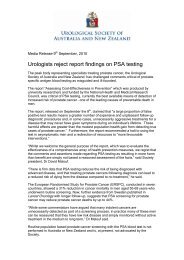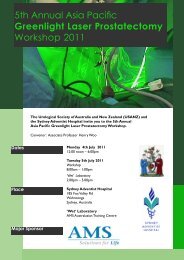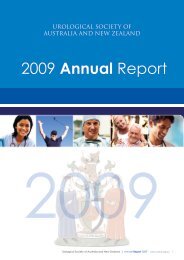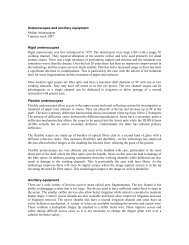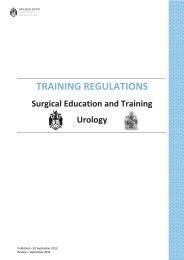CIRCUMCISION OF INFANT MALES
CIRCUMCISION OF INFANT MALES
CIRCUMCISION OF INFANT MALES
You also want an ePaper? Increase the reach of your titles
YUMPU automatically turns print PDFs into web optimized ePapers that Google loves.
THE ROLE <strong>OF</strong> <strong>CIRCUMCISION</strong> IN PREVENTING DISEASE<br />
Recent studies have found that circumcision may provide relative benefits including the<br />
potential prevention of UTIs (urinary tract infections) in infancy. Among adults in<br />
developing countries where the prevalence of sexually transmitted disease is high,<br />
circumcision reduces the risk of HIV/AIDS, syphilis and chancroid. In developed countries,<br />
circumcision may decrease the lifetime risk of penile cancer in men and cervical cancer in<br />
women among high-risk populations later in life. Despite these potential benefits,<br />
evidence must be placed in the context of study settings, local prevalence rates, timing of<br />
circumcision and cultural and religious beliefs. It should also be highlighted that<br />
circumcision provides only partial protection from the above conditions and there is a need<br />
for proper hygiene of the penis. Safe sexual practices are still essential and should not be<br />
replaced by circumcision.<br />
Any potential benefits of circumcision must be weighed against the risks associated with<br />
circumcision.<br />
URINARY TRACT INFECTION<br />
Urinary tract infection (UTI) occurs in up to 4% of boys, predominately in the first year of<br />
life, and in 11% of girls.[60] UTI generally causes an acute febrile illness in boys, with<br />
25% of boys with UTI hospitalised and receiving parenteral antibiotics. Pyelonephritis<br />
occurs in 80% of febrile infants and young boys with UTIs, and permanent kidney damage<br />
is present in about 5%. There is an association between UTIs and chronic renal disease<br />
but UTI, in the absence of congenital hypoplasia or dysplasia, has not been proven to<br />
result in chronic renal failure or hypertension. About 1 in 20,000 children with a history of<br />
UTI will develop end-stage kidney disease.[61]<br />
UTI is more common among uncircumcised boys, especially those with underlying renal<br />
tract anomalies.[62, 63] A systematic review combining results from 12 randomised<br />
controlled trials, cohort studies, and case-control studies investigating the association of<br />
circumcision and UTI concluded that circumcision reduces the risk of UTI by 10-fold.[64] A<br />
more recent meta-analysis of 18 studies of the prevalence of UTI confirmed the greater<br />
rates of UTI in uncircumcised boys.[65] (Level 2++) Nevertheless, 111 circumcisions<br />
would be required to prevent one UTI because of the low baseline risk of UTI, and only<br />
boys at high risk of recurrent UTI would benefit from newborn circumcision. Recurrence of<br />
UTI has been found to occur in up to 35% of boys who are diagnosed with UTI in the first<br />
year of life; however, most repeated infections occur after one year of age (up to 12%) and<br />
boys with greater than two recurrent UTIs generally have underlying urinary tract<br />
abnormalities such as vesicoureteric reflux (VUR) and obstructive uropathy.[61, 64, 66, 67]<br />
In these cases, authors of the systematic review suggested that circumcision should be<br />
considered, as they estimated that only 11 circumcisions would be required in boys with<br />
recurrent UTI and four in boys with high grade VUR to prevent one UTI.[64] (Level 2++).<br />
Evidence of a benefit of circumcision in preventing urinary tract infection beyond early<br />
childhood is limited because the prevalence of UTI decreases quite dramatically in both<br />
circumcised and uncircumcised boys after the first month of life, because there are limited<br />
studies including older children and because the morbidity associated with UTI is less<br />
severe as children get older.[66]<br />
10



